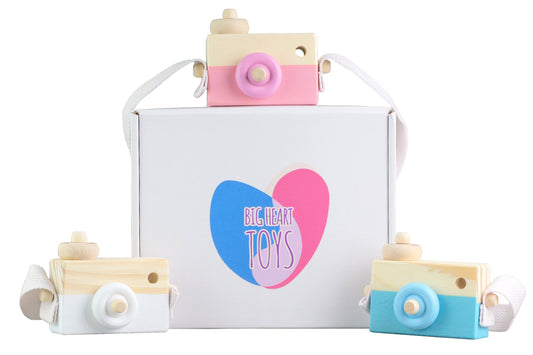Teaching a child with autism to talk is a journey marked by distinctive challenges and exceptional opportunities. Autism spectrum disorder (ASD) encompasses a broad range of neurodevelopmental conditions, and each child's experience is unique. While communication difficulties are a common hallmark of autism, the significance of helping these children learn to communicate effectively is huge.
Communication is not just a means of interaction; it is a gateway to their growth, self-expression, and the development of essential life skills. Let’s explore the intricate landscape of teaching verbal communication to children with autism, delving into the unique challenges it presents and the transformative potential it holds for their self-guided progression.
Understanding Autism and Communication
Autism is a complex neurodevelopmental condition characterized by a wide range of symptoms and challenges. One of the most significant areas affected by autism is communication. For many children with autism, verbal and nonverbal communication can be a hurdle.
They may struggle with expressive language, understanding social cues, and engaging in meaningful conversations. This communication barrier often leads to frustration, isolation, and hindered social interactions. However, it's crucial to recognize that autism is a highly individualized condition, and the impact on language development varies widely from one child to another.
Recognizing the individual needs and capabilities of each child with autism is essential. What works for one may not necessarily work for another. Some children with autism may exhibit delayed speech development, while others may be considered nonverbal or preverbal. Some may excel in written communication or alternative communication methods, such as using picture exchange systems or communication devices.
Approach each child with autism as a unique individual, tailoring interventions and strategies to their specific strengths and challenges. By doing so, you can provide a more personalized and effective path toward improving their communication skills and overall quality of life.
Laying the Foundation: Early Steps
In the journey to teach a child with autism to speak, laying a strong foundation during the early stages is paramount. Often, this begins by focusing on non-verbal communication. Encouraging children to express themselves through facial expressions, gestures, and body language can be a crucial starting point.
These non-verbal cues are not only essential for basic interaction but also serve as a bridge to verbal communication. By honing their ability to convey emotions, desires, and needs non-verbally, you can help children with autism establish a foundation for effective communication.
Behavior modeling is another invaluable tool in the early stages of teaching verbal communication to children with autism. This approach involves adults or other children, such as siblings or friends, demonstrating desired communication behaviors. This includes taking turns in a conversation or using appropriate greetings.
Through consistent modeling and repetition, children with autism can develop receptive language skills, which are crucial for understanding and processing verbal information. By immersing them in an environment where positive communication behaviors are modeled and reinforced, you pave the way for them to gradually transition into verbal expression, making the journey toward speech and language development more attainable and less daunting.
Structured Approaches to Language Development
Structured communication programs have proven to be highly effective in helping children with autism develop their language skills. These programs are typically individualized to address the specific needs and abilities of each child. Through repetition, reinforcement, and systematic teaching, these programs help children with autism acquire language skills gradually.
One approach is the Picture Exchange Communication System (PECS), which utilizes visual supports to facilitate communication. PECS allows children to express their desires and needs by exchanging pictures or symbols, promoting functional communication. Many technological devices utilize this type of communication system.
Visual aids and other resources play a crucial role in bridging the communication gap for children with autism. Many children with autism are visual learners, meaning they often grasp information better through visual cues rather than spoken language alone. Visual schedules, interactive social stories, and communication boards are tools commonly used to enhance understanding and expression.
These aids provide a structured framework that can reduce anxiety and confusion while facilitating communication. By tailoring these resources to the child's preferences and needs, you can create a more supportive and effective learning environment, enabling them to make meaningful progress in their language development journey.
Enhancing Vocal Communication
Encouraging vocalization in children with autism is a vital step toward fostering their language development. This process often begins with the production of simple sounds.
Children may initially make sounds like babbling, cooing, or vocalizations of excitement. These early vocalizations should be acknowledged, encouraged, and celebrated by parents, siblings, and caregivers. Rewarding any attempts at vocalization helps build your child's confidence and reinforces their motivation to communicate through speech.
As children progress, the focus shifts towards forming words. Speech therapists employ various techniques to facilitate this transition, such as speech sound imitation and articulation exercises. These methods encourage children to mimic speech sounds and patterns, gradually shaping their ability to articulate words and phrases.
Patience and consistency are key, as children with autism may require more time and repetition to develop their vocalization skills.
Some children begin scripting, which refers to a behavior where individuals with autism repeatedly and verbatim repeat words, phrases, or even entire conversations from various sources. This behavior can manifest in different ways, including echoing others' words or phrases or the recitation of self-generated scripts that the child has created.
Everyday moments provide invaluable opportunities for teaching children with autism to talk. From mealtime to playtime and during daily routines like getting dressed or taking a bath, caregivers can infuse these moments with language-learning experiences. Describing actions, objects, and emotions, as well as engaging in simple conversations, can transform routine activities into rich language-building opportunities.
Incorporating visuals and props into everyday situations can also enhance communication. For example, using picture cards to illustrate meal choices or daily schedules can help children with autism anticipate and express their preferences.
Fostering social interactions during these moments by encouraging eye contact, turn-taking, and listening skills can further support their language development. By weaving speech and communication into the fabric of daily life, you create a natural and supportive environment for our little ones.
The Role of Technology
In the realm of teaching children with autism to talk, technology has emerged as a powerful ally. Specifically designed apps and communication devices tailored for children with autism have revolutionized the way we approach language development. These tools provide a dynamic and engaging platform to support their unique communication needs, making learning both effective and enjoyable.
Modern technology offers a wide array of apps and communication devices that cater to various aspects of language development. Many of these tools incorporate visual supports, interactive elements, and customizable features, ensuring an individualized approach that aligns with each child's own strengths and challenges.
These tools often capture children's interest and motivation, turning the learning process into a rewarding experience.
Social Interaction and Language Growth
Social interactions play a pivotal role in the development of conversational skills in children. Engaging in conversations not only builds language proficiency but also enhances a child’s ability to understand and navigate the complexities of social communication. Parents and caregivers can foster this growth by creating opportunities for meaningful interactions, encouraging turn-taking, and providing real-life contexts for practicing conversational skills.
Challenges and Celebrating Progress
Challenges are inevitable when you’re teaching a child with autism to talk, but they can be overcome with patience and persistence. It's essential to recognize and address potential setbacks, such as communication regressions or periods of frustration. These moments offer opportunities for learning and adaptation, allowing us to refine our strategies and tailor our support to the child's evolving needs.
Equally important is celebrating progress and acknowledging every small achievement along the way. From a child's first spoken word to more complex sentences, each milestone represents a significant triumph. By celebrating these accomplishments, you not only boost the child's self-esteem but also reinforce the importance of communication as a tool for connecting with others and expressing oneself.
In this process of recognizing challenges and celebrating progress, you create a nurturing and empowering environment that can profoundly impact a child's language development journey. Your patience, understanding, and support will have a direct impact on your little one’s growth.
Involving Professionals and Therapists
Speech therapists and other professionals can play a crucial role in supporting children with autism on their language development journey if you have the opportunity. These specialists bring expertise and tailored interventions that can make a significant difference in a child's progress. Speech therapists, in particular, are trained to address various aspects of communication, from articulation and vocabulary expansion to pragmatic language skills and social communication.
One of the key benefits of involving professionals is their ability to provide a structured and evidence-based approach to language development. They can assess a child's individual strengths and challenges, design personalized intervention plans, and monitor progress over time. This tailored guidance is especially valuable when dealing with specific challenges, such as severe language delays, articulation difficulties, or complex social communication deficits.
Professionals can empower parents and caregivers with strategies and techniques to reinforce language development and turn this often isolating journey into a partnership. They offer valuable insights and guidance, fostering a collaborative and holistic approach to supporting a child's communication skills.
Empowering Children With Autism To Communicate
Empowering children with autism to communicate is an investment in their lifelong journey toward independence and meaningful connections. The ability to express thoughts, emotions, and needs through effective communication not only enhances their quality of life but also opens doors to education, social interactions, and future opportunities.
Caregivers and parents, as guiding lights in this journey, must embrace patience, persistence, and a commitment to continuous learning. By nurturing a supportive and understanding environment, you can help children with autism overcome communication barriers and embark on a path towards self-expression and self-confidence, empowering them to thrive in a world that values their unique voices.
Visit our blog for more resources and support in raising children with autism!
Sources:
Autism Spectrum Disorder | Communication Problems in Children | NIDCD
What Is Autism? | AutismSpeaks
Types of Social Cues | Social Skills for Children | Social Issues | Understood.org
Delayed Speech or Language Development (for Parents) | Nemours KidsHealth
Picture Exchange Communication System (PECS) | RaisingChildren






